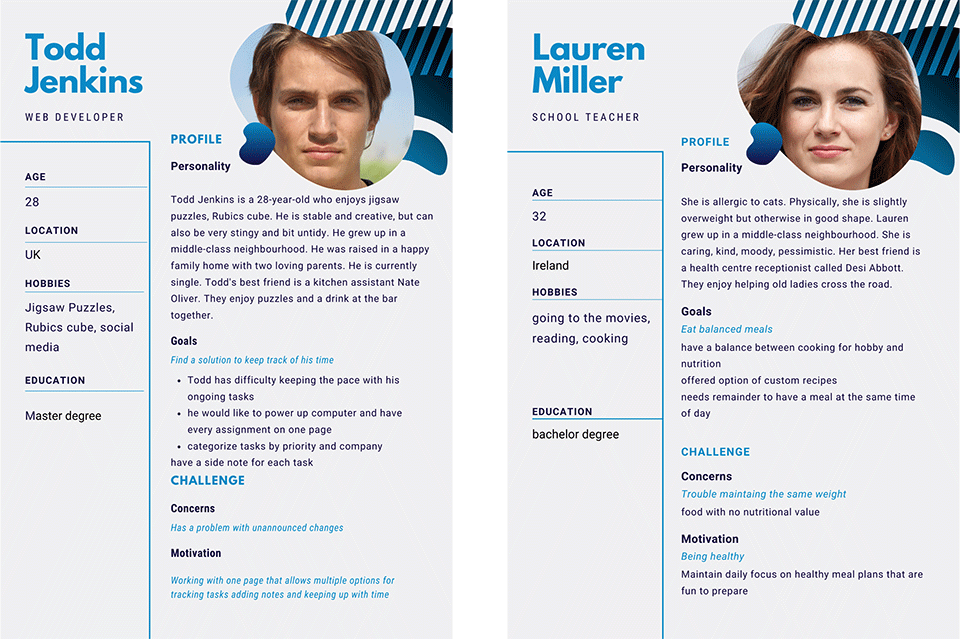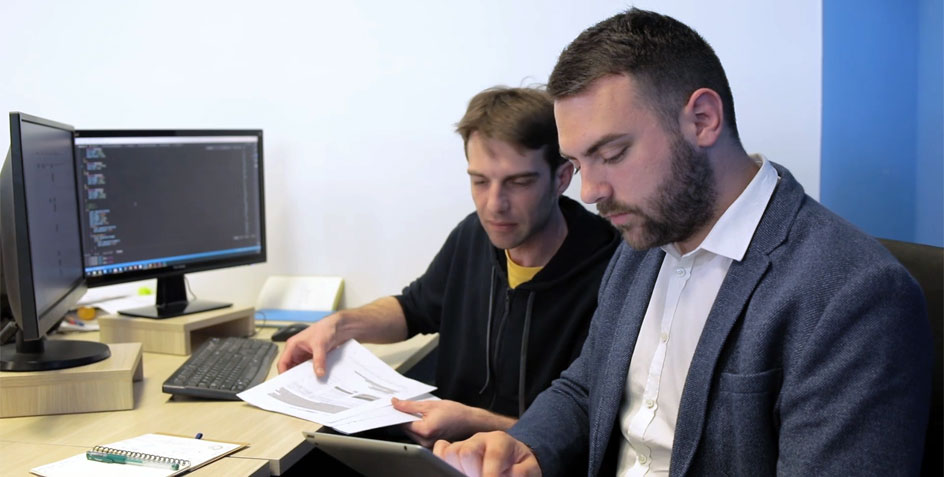Creating user personas is like writing down a character for the book. There are billions of people in the world with particular needs and backgrounds. Any software UX designer will confirm the importance of user persona. Not only does it help the designers, but it is also the most crucial segment of the user-centred design process. A user persona is a supporting character in the plot that provides enough data for a successful outcome.
The company’s digital asset is like a book. It has its characters, plot, setting and resolution. Like in any action, the characters are leading the reader through the scenario. It is the same as UX design, where UX designers utilise personas to create a user journey through the software.
User personas are some of the characters in the company’s narrative existing somewhere in the vast marketplace. In user-centred design, the persona is a fictional character representing a typical user who is likely to utilise a company website or application.
In the book analogy, a UX designer is a writer, crafting a narrative around the imaginary character and thus providing the user with the best possible experience. These characters are created based on market research of targeted audiences. They are designed to give the development team and UX designer a complete image of the consumers.
The marketing department and UX designer compile this data into a visual summary to give the character personality and a face. Creating a graphic for a user persona is easy and can be done in numerous online editing tools. Its form is similar to writing a resume for that fictional character. Of course, the more detailed the image of the user persona is, the better the outcome and success of the software.
Bringing the Character to Life
Creating User Persona
Building the user persona character is gathering data from research and is a part of the user experience process. User personas are created to help identify users in the real world and make sense of their needs, goals and requirements to develop a successful solution. As it is, developers and designers are building software for people and being backstage. Therefore, they need an actual example of who will be using this app.
Real people have specific challenges, emotional drives. In other words, getting acquainted with their needs and incorporating them into design means creating software that people will want to use. Personas are like an anchor or plot twist in the story about the software. It gives the team an image of a person using the product, so developers and designers can make decisions on the data and material they receive from user personas.
Information about the persona can be overwhelming and is often categorised into collections. In addition, there are usually two pieces of information that are at odds with each other. Two confronting requirements mean that the team will have to decide which to guide the development process and decide on less essential features. First, having an empathic relationship with the user persona creates a user-centric design of the software.
People looking to solve their problems with such software can be found in various places, from mother company website analytics to competitors’ social media, actual people and app store reviews. Therefore, it is of the utmost importance to define and visualise the person who will use the software and its specific needs. This data should be uncompromised and gathered from as many sources as possible. Human psychology is a wonder of nature. What triggers one person is another’s pain point.
Depending on the intricacy of the project and the depth of research, personas may include a variety of facts:
- geographic location,
- gender,
- education,
- professional background,
- personality,
- emotional drives,
- user environment,
- age group,
- preferences,
- motivation for using the software,
- concerns that can make them stop using software
- specific problems this application will solve for them.
As shown on the image accompanying the text, user personas enrich the protagonist’s storyline, and that is the software itself. Each information can decide on software direction. For example, Todd works from home and uses only Mac while working. Occasionally he takes his iPad when he is out of the house to check his tasks. User environment changes, and so do devices, which is an important fact when building software.
Lauren, on the other hand, likes to receive personal experience and favours apps over anything else. She doesn’t mind the help from the nutrition expert as long as she chooses food selection. Therefore, it all comes down to Lauren’s choice to use the app to help her eat healthily and enjoy making recipes along the way. Consequently, whether it is Todd’s task management application or Lauren’s nutrition tracker app, user personas tell the tale of the natural world needs and requirements.
No Narrative is Complete Without the Supporting Character
The Importance and Benefits of User Persona
It is a common fact that knowing the user is the first and most crucial step in user-centred software development. The code written on the screen will be handled by real people located somewhere on this planet. If it fulfils their expectations and resolves any challenges they may have, it is software that will be in use for a very long time. That is where the empathy for user persona comes in, as the crucial segment of any design.
According to Statista, there are 100,000 apps released on Google Play Store each month. With so many choices available, people are relentless and less tolerant of failures or nuisances. As a result, many apps get removed from the device after a single use. The number one reason why people choose to uninstall applications is because of the poor user experience. Knowing the user’s frustrations and goals means that the user persona has played its part in the app development, which implies that software will be successful on the market.
User persona has an immense value for UX designers. Having an actual person with real problems is far more specific than guessing users’ needs. UX design is all about anticipating the user’s behaviour and any potential issues that may occur. With the user persona visually in front of them, the UX designer can empathise with that user’s goals. Fulfilling the user’s needs means preventing them from seeking another application on the market.
Good User Persona Equals a Soothing Epilogue
In today’s market, a hectic pace of life dictates how we approach the applications we use. Suppose it does not solve a problem or help in any way. The application is removed from the device instantly. There is always just one opportunity to make an excellent first impression. The majority of the software’s life depends on user personas and UX design.
Having a high-performance application with no structure and guidance is like having a book half-written. The empty pages are always confusing, so there is always time to invest in a good UX design that will guide the user through the app, help resolve any issues or questions and finally increase downloads and usage. As simple as it sounds, the application’s success depends on downloads and the number of users.
TNation is an outsourcing software development company with experienced developers and UX designers ready to build user-centric software solutions. Please tell us your new ideas!



